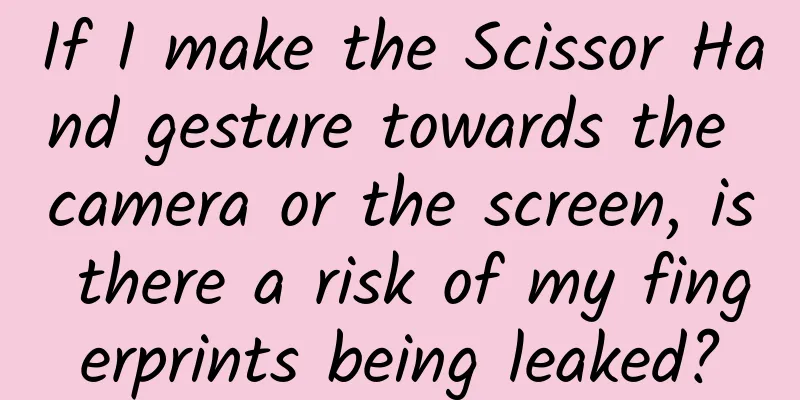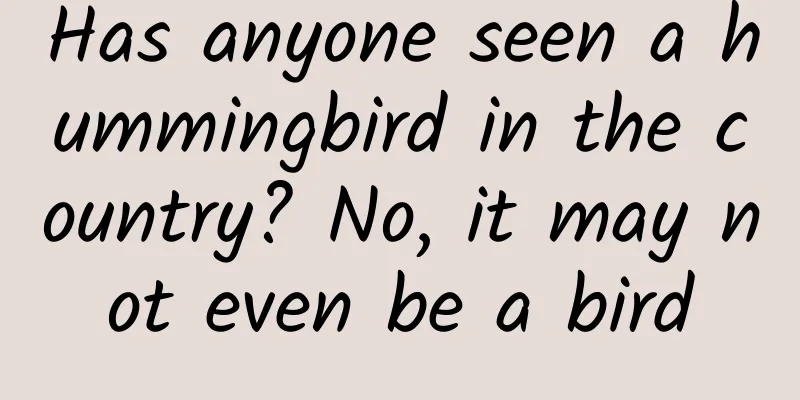If I make the Scissor Hand gesture towards the camera or the screen, is there a risk of my fingerprints being leaked?

|
In modern society, there are many occasions where a person's identity needs to be verified. Comparing ID cards is of course a common method, and face recognition is also helpful, but there is one of the oldest methods that is still in use today, and that is fingerprint comparison. It can determine whether a fingerprint left on paper or an object belongs to someone in a very short time with extremely high accuracy, thereby confirming their identity, with low cost and good results. Image source: soogif 1. What is a fingerprint? As the name implies, fingerprints are the general term for the various skin lines on everyone's fingers. In fact, humans not only have fingerprints, but also knuckle lines and palm lines, but fingerprints are usually the most commonly used identification features. There are sweat glands on human fingers that can continuously secrete sweat. When the protrusions on the skin lines are dipped in sweat and then touch other objects, they will leave their marks on the surface of the object, thus forming fingerprints. This is similar to dipping a seal in ink and then stamping it on paper, except that sweat is transparent. Image source: pexels Human skin can be divided into the epidermis and dermis. Human fingerprints are mainly distributed in the germinal layer of the epidermis. The cells in this layer have the ability to reproduce themselves. When the outer cells are worn out and fall off, new cells will be replaced from the inside. Therefore, human fingerprints cannot be removed by physical means. In the 20th century, a gangster in the United States used strong acid to burn his fingerprints. Unfortunately, new fingerprints grew out only two months later. His suffering was in vain. As for the question of "why do humans have fingerprints", humans still cannot answer it. A more reliable guess is that when fingers grasp objects, fingerprints play a role in preventing slipping, a bit like the raised patterns on the soles of shoes. But this cannot explain why everyone's fingerprints are unique. Indeed, there are roughly more than 8 billion people on Earth today, and forensic science believes that no two fingerprints are exactly the same. This is because human fingerprints are very complex, and the thickness, length, shape, and tilt angle of each line on the fingerprint are different; the lines can also form parallel, cross, and interspersed situations. Therefore, according to the principle of permutation and combination, the number of combinations that these lines can form is very large. It can be said that even if the population of the earth increases tenfold, it is not certain that two fingerprints will be exactly the same. What's more interesting is that humans start to grow fingerprints from 3-4 months old, and although fingers grow slowly, the pattern of fingerprints remains unchanged throughout life. As for the reason behind this, some people believe that fingerprints are related to DNA (deoxyribonucleic acid), and everyone's DNA is unique, so fingerprints are also unique and lifelong. Image source: Pixabay 2. How to identify? Determining identity through fingerprint identification mainly involves comparing fingerprints on paper with fingerprints printed on the surface of an object. In this case, the fingerprints are usually made by deliberately applying ink or ink with fingers. The fingerprints are clear and regular, and the comparison is relatively simple: with the help of a magnifying glass, first find a few characteristic points on the fingerprint (for example, whether two lines cross, whether they are tilted in the same direction, whether they are curved or straight), and then compare the fingerprints to see if there are similar characteristic points. Generally speaking, if there are 10 consistent characteristic points, it can be confirmed that they are the fingerprints of the same person. Image fingerprint identification | Source: provided by the author Today's fingerprint identification has a similar principle, but it is done using instruments, which is faster and more accurate. So, was it possible to identify fingerprints in ancient times when there were no fingerprint identification instruments or even magnifying glasses? It is not difficult to see from various documents that our ancestors were able to identify fingerprints, which is why they required both parties to press their fingerprints on various contracts. Although the accuracy of the identification may not be high and is subject to various objective conditions (for example, if the finger is tilted when pressing, the fingerprint will be deformed; if the finger is dipped in ink too much, it will also cause the fingerprint to be blurred), if you have enough patience and carefulness, you can still be sure to see that the two fingerprints are inconsistent. Of course, there is a more interesting usage, which comes from the warlord Ma Hongkui during the Republic of China. He promoted the "identity card" in Ningxia to strengthen social control. But at that time, taking photos was a very expensive thing, and it was impossible for everyone in the province to take one; so he came up with a simple and efficient method: Each fingerprint can be divided into a jī (the center of the fingerprint is open) or a dou (the center of the fingerprint is a closed concentric circle) according to whether the center is a closed circle. At this time, "○" represents "dou" and "X" or "△" represents "ji". Each fingerprint is either "○" or "X". Ten fingers can of course be represented by ten symbols. According to the order of "left hand to right hand, thumb to little finger", a 10-digit string can be formed. For example, the fingerprints of the author of this article are represented in this way, and the string is: XOOOX XOOOX. When issuing an ID card, you only need to look at the holder's hands and record the string of characters on the ID card to complete the fingerprint registration. When checking the ID card, you only need to compare the string of characters on the ID card with the person's hands to instantly determine whether it is the person. This method is very simple and even illiterate people can learn it. So, if two random people have the same 10-digit string, can they borrow each other's ID cards? Yes, but mathematically speaking, the probability of this happening is only 1/1024, which is less than one in a thousand. How can such a coincidence happen? 3. Leaked fingerprints? At this point, some readers may worry, if my fingerprints are leaked, wouldn’t it be very dangerous? Well, theoretically, it is possible to steal someone's fingerprints. As long as you get an object that someone has grasped (such as a glass or a door handle), you can take a fingerprint and then create a copy. However, to be able to fool the fingerprint identification device, you need a very clear fingerprint, which is difficult to achieve with fingerprints left in daily life. Of course, if you take the initiative to leave a clear fingerprint and then order a silicone fingerprint (some people use this method and ask colleagues to punch in for you), it is relatively much simpler, but the consequences are often difficult to control. In addition, some people worry that the "scissor hand" gesture when taking photos will reveal fingerprints, which is still very difficult with current technology. After all, photos have pixel limitations. Even if you enlarge the photo many times, it is difficult to clearly show the fingerprint. Unless you deliberately take a photo of your own fingers and then post the photo to your circle of friends, you don't have to worry too much. Source: Chongqing Science and Technology Museum Author: Mantou Laoyao, popular science writer, and PhD in Chemistry from Nanjing University. Statement: Except for original content and special notes, some pictures are from the Internet. They are not for commercial purposes and are only used as popular science materials. The copyright belongs to the original authors. If there is any infringement, please contact us to delete them. |
<<: Beware! Extraterrestrial "Assassins"
Recommend
Why don’t TVs nowadays have power buttons and can’t be turned off?
Smart TVs have made our entertainment life more c...
Android BT Magnet Searcher v3.5 Multi-engine
The interface is the same as Little Magnet, but w...
Snowden predicts: Apple iPhone will be screwed by FBI
According to foreign media reports, the battle be...
Deconstructing the routines of Xiaohongshu’s popular articles!
This article mainly focuses on the creation and a...
Creative interpretation and placement strategies of WeChat Moments advertising cases
There are two types of advertisements for WeChat ...
If mobile phone chips are free, it must be Xiaomi's doing
Although Xiaomi has not launched any new products...
Garmin wristband first test
When I first got the Garmin Vivofit, whether it wa...
Romance from deep space! Details of "Laser" and ultra-high energy photons revealed
In 1054 AD, an astronomer in the Northern Song Dy...
Qutoutiao advertising cases and advertising forms, advertising effects!
The editor will introduce to you the advertising ...
"King of Brawl TV Edition" Review: No matter how good your martial arts skills are, you are afraid of group fights. The most "barbaric" DNF style fighting game
When talking about fighting games, almost everyon...
What are the characteristics and trends of advertising for tool apps?
Mobile tool apps are a type of app that started r...
Analysis of McDonald’s marketing code!
"Would you like some cilantro with ice cream...
Understand information flow video ads and their delivery strategies in 3 minutes!
The value of information flow advertising is incr...
UPYUN Open Talk: Subverting daily life/APP architecture and technology extension
About this activity Mobile Internet has swept eve...
Autonomous driving may have nothing to do with artificial intelligence for a long time
People in the Internet industry like to talk abou...









